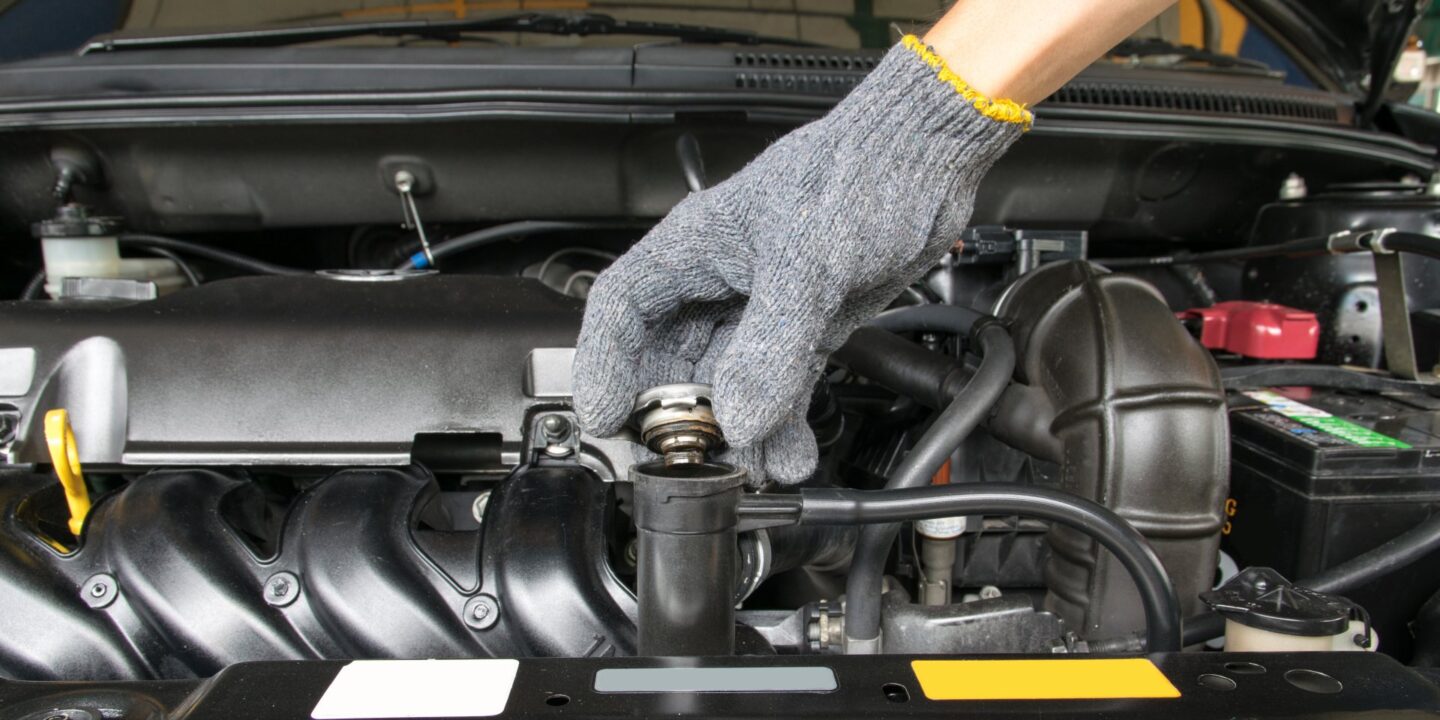- Home
- Fun Autopart
- 8 Tell-tales Symptoms Of A C ...

Symptoms of a clogged radiator may become a nerve-racking thread in daily life. It’s a good point once you figure out the issue, yet resolutions ain’t alike for cases. That’s why DriveRevolve is here, leaking the whole story on each.
Any buff or novice should find the boons reading this post for what they’re after. Off we go!

What Does A Radiator Look Like?
You can see the car radiator in the front of the engine bay after opening the bonnet.
The radiator appears as a rectangular and slim honeycomb panel with hoses attached to it.
Top Symptoms Of Clogged Radiator
How to tell if radiator is bad? Take a peek at these sure signs of a lousy or clogged radiator to halt the more serious issue raising and threatening the whole car’s well-being.
Engine Overheating
Clogged or bad radiators often show off the engine overheating.
It meant that the wrong cooling system would lead to high friction, internal component melting, and engine change as the moving sections at high speeds can’t operate as is.
Low Coolant Level
Coolant at a low level may stem from the coolant leak problem.
Insufficient addition of coolant after the system flush may also be blamed for. This will result in engine overheating, thus, it’s identifiable at large.
Sludgy Coolant

Common coolant is often seen with bright green and yellow hues. It becomes problematic when you notice other colors instead.
For explanation, transmission fluid, oil leaks, and radiator rusting can infiltrate your cooling system, rendering coolant viscous.
Sludgy coolant can’t run through the system’s channels as normal, causing overheating at the end. Hence, never look down on discolored coolant.
Coolant Leak
A radiator leak indicates the defective cooling system inside your car. Seems to be detectable, it’s risky, though.
If so, you may find abnormal coolant and puddles on the floor. It warns such a thing should be tackled ASAP.
Still, some models have extra underbody panels that can obscure leaking, making it hard to investigate. So, double-check if your car belongs to this version.
Car emits smoke with unknown reason? The answer may lie there.
Engine Temperature Light Illuminates
A huge shortcoming will be if I ignore the engine temperature light coming on in the list of clogged radiator signs.
Whenever the heat level rises that high, this light will alarm you. And obviously, one of the rising temperature issues comes from lousy coolant.

Interior Heating Problem
No heat appears though you turned on the car’s heat system, reflecting the radiator issue.
In detail, the heat is caused by hot coolant and is in charge of heating your whole car.
Speak differently, once the radiator is not satisfactory, the car cannot reach the heat level needed.
Clogged Radiator Fins
One of the sure signs of a bad radiator is damaged radiator fins, which are small hoses running from one side of your radiator to the other. Clogged fins will go with the radiator failure accordingly.
Fortunately, malfunctioning radiator fins are easy to pinpoint. Have a professional look if this is the case.
Transmission Issues
This takes place when the cooling system leaks coolant into the transmission cooler or vice versa. Incompatible transmission fluid mixture has a toll on the transmission and even radiator failure.
How to check the clogged or malfunctioned radiator, watch this video:
How To Unclog Radiator
What you’ll need: Screwdriver, Wrench, Flare Nut Wrench, Garden Hose.
Once you get eligible, follow these quick steps for having things done – unclog this funny auto part.
1. Remove the cap: Press and twist your radiator cap in a counterclockwise dance.
2. Coolant countdown: Drain the radiator’s antifreeze by unscrewing the drain plug at the bottom.
3. Hose Unleashed: Bid farewell to upper and lower radiator hoses. Loosen those clamps with a screwdriver, slide them down, and pull the hoses away from the radiator with flair.
4. Dismantle Transmission Lines: With the automatic transmission, use a flare nut wrench to disconnect the cooler lines at the radiator’s bottom gracefully.
5. Radiator Removal: Free your radiator by releasing its bolts with a wrench. Lift it out like a pro – one bolt at each corner. Each retaining bolt typically resides at each corner of your radiator.
6. Flip & Flush: Go topsy-turvy with your radiator. Plonk it upside down, hose in the outlet, and let the water run until it sparkles clear. The water will erase almost any deposits and clogs inside the radiator’s fins.
7. Turn your radiator over, insert the hose into the outlet that the upper radiator is enclosed to, and watch the magic happen. Turn your hose until water becomes clear when running out of your radiator!
How Much Does A Radiator Change Cost?

The whole process often takes roughly $300 to $600 and the figures are up to the peculiar cases, auto make, radiator quality and size, and car models. Set an eye on the labor cost as well.
The more involved it is with the radiator, the more you have to pay.
For example, some car models just go with meager effort for radiator removal and change, while others entail various elements, brackets, or something more.
Wrapping Up
There you get it right – the whole ins and outs of symptoms of a clogged radiator with DriveRevolve.
Perhaps more culprits can make up the longer stories, yet, almost the basics are leaked. Here goes!
What you’re after is on the go, the next step will be on your hand. Be smart to go for DIY measures or a pro check! Being a pro in the automatic world will save you millions of money and save time as well.
Click to rate this post!
[Total: 1 Average: 5]

